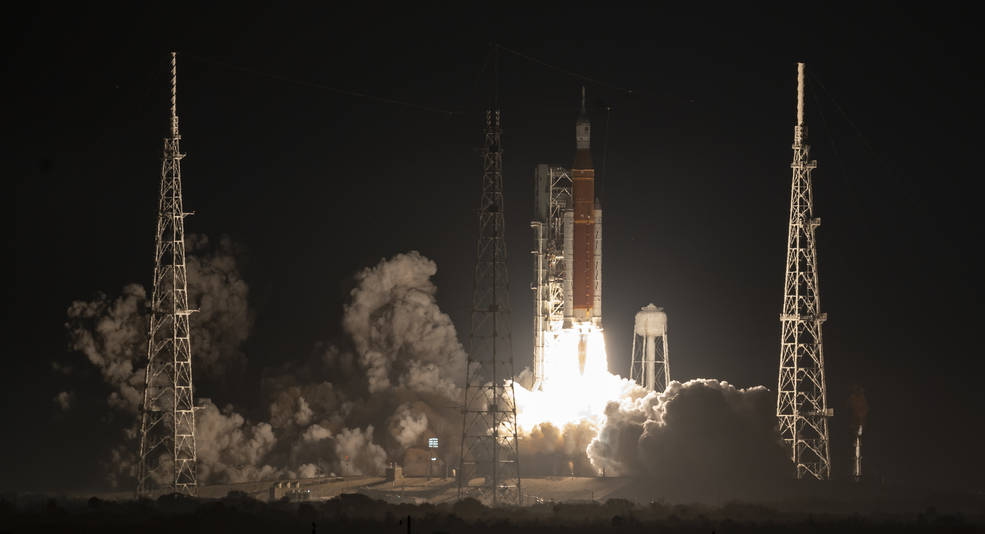In a spectacular display of light and sound, NASA launched the most powerful rocket ever made on a mission to the Moon. This launch marked the beginning of the space agency’s new flagship project, Artemis I, which carries out human exploration missions to the moon and mars. On November 16, 2022, the 32-story-tall Space Launch System (SLS) lifted off from Florida’s Kennedy Space Center with a record 8.8 million pounds (39 meganewtons) of thrust. The Orion spacecraft, which will orbit our nearest neighbor Earth in a test trip for further, flights in which the first woman and the first person of color should set land on lunar soil by the middle of the 2020s, was fastened to the rocket’s top.
“Now we are going back to the Moon, not just for the sake of going to the Moon, but to learn how to live on the Moon in order to prepare to send humans all the way to Mars,” said NASA Administrator Bill Nelson in a news conference after the launch.
What obstacles did the NASA scientists have to overcome before the launch?
The two-hour launch window was cut short by technical challenges, which caused some anxious moments as crews struggled to fix them. On November 15, 2022, Tuesday night, a valve leak led engineers to temporarily stop the flow of liquid hydrogen into the core stage, but after an hour, a team deployed to the launch pad tightened several loose bolts to fix the problem. Later, the space agency claimed that a malfunctioning ethernet switch had to be changed at a radar station monitoring the rocket’s flight path. For NASA, it was their third time lucky after two prior launch failed attempts due to technical difficulties. Weather-related problems, like Hurricane Ian, which slammed Florida in late September, also contributed to the launch’s delay.
What is Orion’s mission this time around?
Orion is a spacecraft that is an essential component of NASA’s Artemis mission, which aims to establish a lasting presence on the lunar surface and get humanity ready to head to Mars. Orion will take up a far-off orbit, traveling more than any other habitable spacecraft to date—40,000 miles (64,000 kilometers) beyond the far side of the Moon—instead of making a lunar landing.
The spacecraft will then start the return phase of its voyage. The heat shield of the capsule must be able to sustain a temperature half that of the Sun’s surface while traveling through the atmosphere. Even though Orion isn’t carrying any people at the moment, it does have three sensor-equipped dummies on board to help collect safety information for future crew members.
How long will this mission be? And What is NASA’s plan?
The mission will endure for 25 and a half days, and on December 11, it will splash down in the Pacific Ocean. After spending more than a decade creating the SLS rocket, NASA is counting on a successful trip. By the end of 2025, it will have spent more than $90 billion on its new lunar program, according to a public report. In Artemis 2, astronauts will fly past the Moon in 2024, and in Artemis 3, humans will set foot on the Moon no earlier than 2025. NASA aspires to establish an annual launch schedule that will involve partners from countries including Japan, Canada, and Europe.
To ‘science-up’ your social media feed, follow us on Facebook, Twitter, or Instagram!
Follow us on Medium!





1 comment
[…] the announcement of the Chandrayaan-3 launch by ISRO marks another significant leap toward lunar exploration. Following the successes of Chandrayaan-1 and Chandrayaan-2, it holds great promise for advancing […]